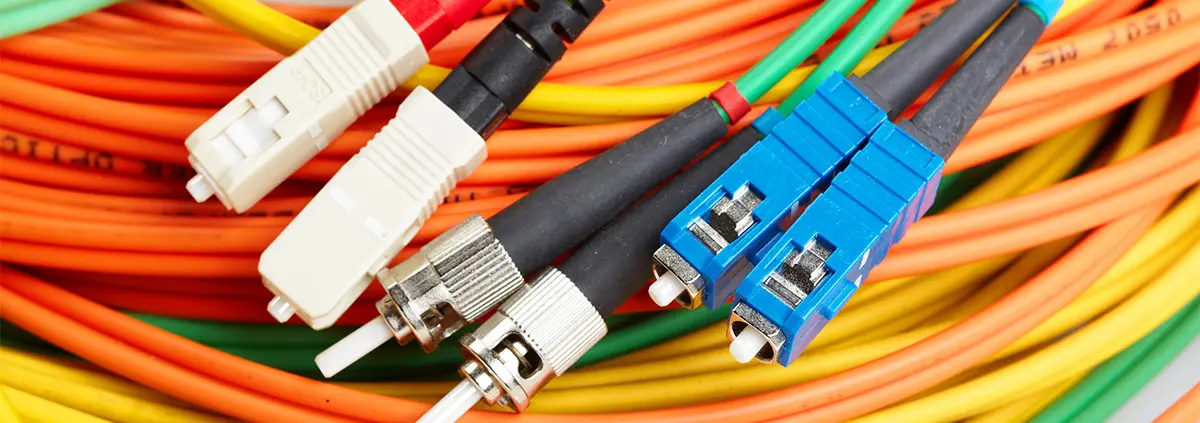What Is Fiber Optic Cable and How Does It Work?
Fiber optic cables revolutionized how we transmit data across the world. These cables use light pulses instead of electrical signals to send information at incredible speeds. Businesses relying on IT support in Allentown benefit from fiber optic infrastructure for faster, more reliable networks. This guide breaks down how fiber optic technology works, from its physical structure to data transmission. You’ll learn why this technology dominates modern telecommunications and what makes it superior to traditional copper cables.
Basics of Fiber Optic Technology
Fiber optic technology sends data using light signals through thin glass or plastic fibers. These fibers guide light through internal reflection, keeping signal loss minimal even over long distances. The center part carries the light, while a surrounding layer reflects it inward to prevent dispersion. A light source, such as a laser diode, converts electrical signals into light pulses. These pulses travel through the fiber until reaching a detector that converts them back into electrical signals. This process happens at lightning speed, making fiber optics perfect for high-speed internet and communications.
Structure of Fiber Optic Cable
The structure of fiber optic cable determines how well it transmits data. Each cable contains several layers that work together:
- Core: The central part through which light travels within the cable.
- Cladding: Surrounds the core and keeps light trapped inside by reflecting it.
- Buffer Coating: Protects the fiber from moisture and physical damage.
- Outer Jacket: Provides extra protection and strength to the entire cable.
These components create a pathway for light pulses to travel efficiently. Understanding this structure helps explain why fiber optic cables perform so much better than older copper cables.
Transmission of Light Signals
Light signals remain confined within the fiber core through a process known as total internal reflection. The core has a higher refractive index than the surrounding cladding. When light enters the core, it bounces off the boundary between the core and cladding. This bouncing keeps the signal trapped inside the core as it travels. The signal experiences minimal loss because light doesn’t escape or weaken significantly over distance. This principle allows fiber optic cables to carry data for miles without needing signal boosters. The result is faster, clearer data transmission compared to traditional cables.
Advantages of Fiber Optic Communication
Fiber optic technology offers major advantages over older communication methods. These benefits explain why it’s become the standard for modern networks:
- High Bandwidth: Fiber optics carries massive amounts of data over long distances without signal loss.
- Low Attenuation: Signals travel for miles without needing regeneration, cutting network costs and complexity.
- Immunity to Electromagnetic Interference: Fiber optic cables aren’t affected by electromagnetic interference, guaranteeing clear signals.
- Secure Data Transmission: These cables are extremely difficult to tap into, providing high security for sensitive information.
Fiber Optic Cable Installation Process
Installing fiber optic cables requires careful planning and precise execution. The first step involves surveying the installation site to check distance, existing infrastructure, and potential obstacles. Then crews use trenching or aerial methods to lay the cables. Specialized tools, such as fiber optic splicers and termination kits, are used to accurately connect the cables. Once installed, technicians test the cables using optical time-domain reflectometers (OTDR) to verify signal integrity and catch any issues. Proper documentation of the installation helps with future maintenance and troubleshooting. This careful approach maximizes network performance and reliability.
Future of Fiber Optic Technology
Fiber optic technology continues to advance and shape global communication. New developments promise even better capabilities and efficiency. Here’s what’s driving the future:
- Increased Bandwidth: Ongoing improvements continually enhance data transmission capacity.
- Faster Speeds: New fiber optic technology achieves faster data transfer rates than ever before.
- Better Reliability: Engineers focus on making fiber optic systems more robust for dependable communication.
- Integration with New Technologies: Fiber optics now works with 5G and IoT to create powerful, interconnected networks.
These advances mean faster internet, better phone service, and more reliable connections for homes and businesses alike.
Related Topics:













